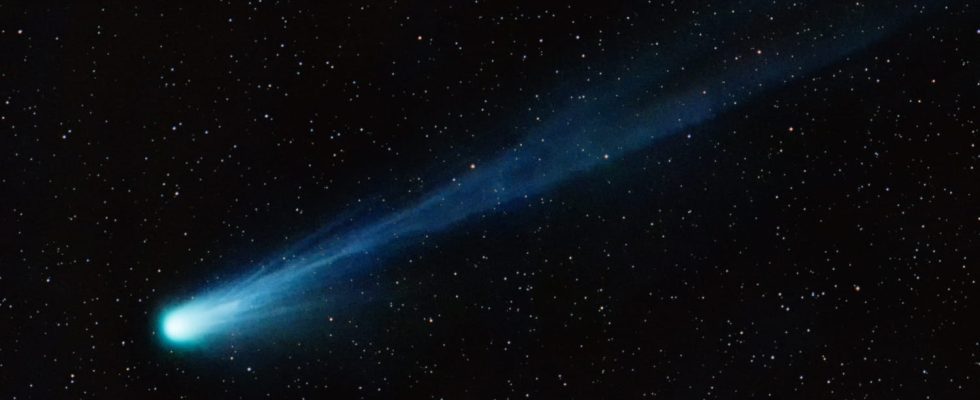You only have a few days left to admire the gigantic Devil’s Comet: all the information so you don’t miss anything about the event!
For several weeks, an unusual luminous star has attracted the attention of amateur and professional astronomers. Nicknamed “devil’s comet” because of its shape evoking a pair of horns, it is not a new star but the comet 12P/Pons-Brooks which passes several tens of thousands above our heads kilometers per second. If you haven’t had the chance to see it yet, don’t wait too long because you probably only have a few days left to enjoy it before it disappears for a very long time. With a diameter of thirty kilometers, more than three times the height of Everest, this space monster is composed of rock and ice which transforms into a plume of steam when the comet approaches the Sun.
To enjoy the spectacle offered by this cosmic visitor, you will have to go out at sunset around 9:30 p.m. and direct your gaze towards the western horizon in the constellation Aries. As the sky darkens with the night, the comet should gradually appear relatively low in the sky and descend little by little before disappearing just before midnight behind the horizon. Depending on the geographic area where you are, the brightness of the comet and the visibility you have, it will be possible to observe the Devil’s Comet until April 21. On this date it will have reached its closest point to the Sun and will become visible to inhabitants of the southern hemisphere.

With a little luck, you may be able to admire the comet with the naked eye, but nothing is less certain because its brightness is very difficult to predict with precision. So you have to stay tuned so as not to miss the show! However, if you have binoculars or a small telescope, it will be easier to distinguish the star and its hair of a characteristic greenish color. For optimal observation, place yourself in a place where the horizon is clear in order to extend the observation as long as possible once the Sun sets and to take advantage of the darkness of the night.
The passage of 12P/Pons-Brooks near our planet is an astronomical event not to be missed. Discovered by a French astronomer from the Marseille observatory, this comet knows how to wait since its next visit near the Sun will not take place until 2095 while the last one dates back to 1954. So don’t waste any more time and enjoy the spectacle before the comet disappears for several decades into the depths of the cosmos.
